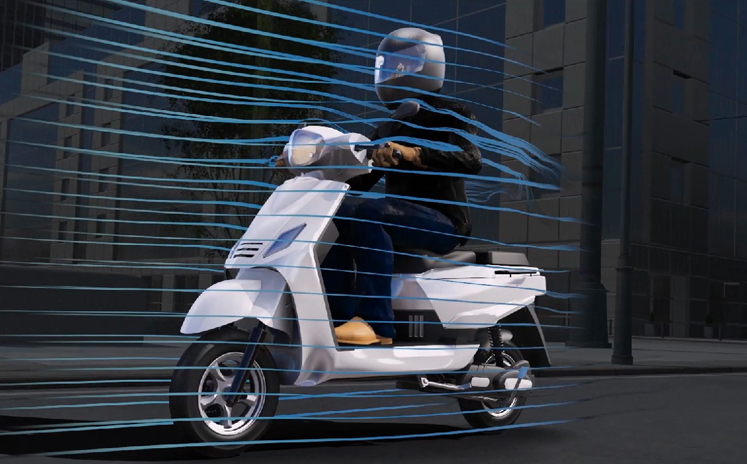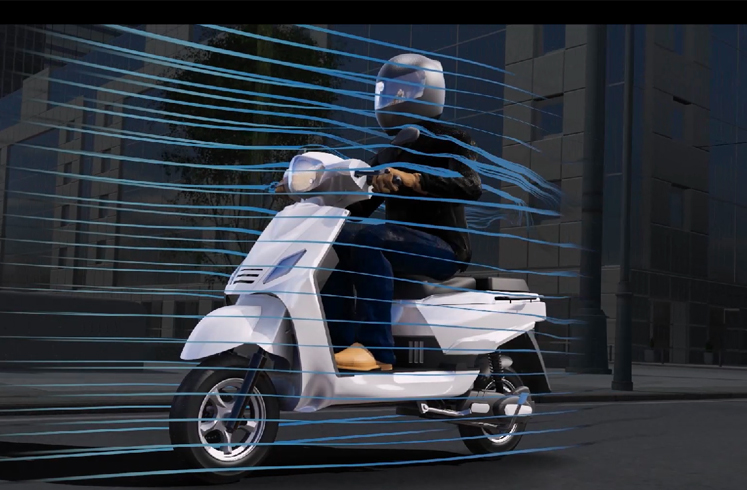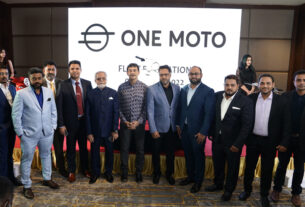
India is on an electrification spree in the automotive sector. Comprising of two, three, and four-wheeler vehicles, it is presently growing and will witness a boom in the coming times.
As per a report by KPMG, the government is targeting 40% EV adoption by 2032 at a CAGR of 22%. It further states that the 2- and 3-wheeler market will be driving the EV market in India. Presently, India sells 18 million 2 wheelers every year. Going by this pace, it is anticipated that EV – 2 W will be 55% of the total new-vehicle market by 2030.
Effect of the pandemic: Present scenario
According to ICRA’sreports, electric two-wheeler sales are expected to reduce 15-17% YOY. The sole reason for this reduction is due to the on-going pandemic, healthy concerns along with economical barriers. The FAME- II scheme was launched to push the growth of the EV sector from FY2020-FY2022. However, as of now, lesser than 2% of the overall objective has been achieved.
Reduced need of travelling, lack of consumer awareness, absence of product knowledge along with after-sales service concerns are some of the major barriers in the growth trajectory of 2W EVs.
The Budget announcement however has brought some respite for the sector. While there was no direct mention for the EV industry, with the introduction of the vehicle scrapping policy and increased focus on infrastructure might help in pushing the adoption of electric vehicles in India. Along with this, the government announcing the waving off the tax payment for the start-ups will further drive its growth as the majority of the two-wheeler EVs are from start-up ventures.
Growth of electric two-wheeler segment

India boasts of being the largest two-wheeler market across the globe. Hence, it is expected that the EV two-wheeler market in India will grow at a CAGR of 44% during 2019-2025. While it is also anticipated that they will account for over 4 million units by 2025, the electric two-wheelers will witness a major growth spurt. As per JMK Research’s report, 1,50,000 electric two-wheelers in 2020 are expected to grow to 34,50,000 electric two-wheelers by 2025. Frost & Sullivan’s report also states that 1,48,000 electric two-wheelers in 2020 will grow to 30,00,000 electric two-wheelers by 2025.
While the electrification process of the vehicle sector is still in the nascent stages with EVs forming less than 1% of the overall vehicle sales; the process will witness a significant growth. The fact that various players including both brands like TVS, Bajaj and relatively fresh entrants like Ampere Vehicles, Ather Energy, GoGreenBOV have forayed into the EV sector and are working dedicatedly which further supports and pushes the growth of the segment in India.
Additionally, the battery prices dropping will further increase the EV two-wheeler sale in India. This is because battery constitutes about 40-50% of the total EV cost. Battery prices are dropping every year from $1100/kwh in 2010 to $200/kwh in 2019 that is around 87%. A significant drop in battery price will happen from FY 2022 and there will be a 7-8% fall in YOY and this will further boost the sales.
The eco-friendly designing of the two-wheeler EVs further pushes their growth. 14 out of the 20 most polluted countries in the world are in India. Owing to the increase in air pollution and poor quality of air, India is moving towards the introduction and launch of financially feasible and viable solutions for businesses especially in the automotive sector. It is primarily due to this reason that India is shifting towards electrification and by 2030, EV is expected to rule the automotive sector. This further thrusts upon the responsibility on the manufacturers, suppliers, and dealers to meet the rising demand of the consumers.
EV is also increasingly preferred due to its alternate powertrain technology and zero tailpipe emissions and offering vehicles at a convenient pricing. Moving towards EV will be a win-win situation for India as it will reduce the oil imports and will help curb pollution. Additionally, it will also uplift the automotive sector in the country thereby making it smart with the technology adoption.
As per Frost & Sullivan’s reports, the pandemic has created a need for personal conveyance and this will lead to the increased preference of two-wheeler EVs from 2020-2025 considering they are affordable and environmentally friendly. The consumers will prefer going for small capacity engines as they provide more mileage. The report further states that the demand for 2W EVs will witness a surge in the rural areas thereby boosting the sector. From the commercial aspect, the rise in online shopping, food deliveries, and digital working of businesses will further impact the demand for electric two-wheeler vehicles.
As reported by Research and Markets.com, the Indian electric two-wheeler market is expected to touch the sales volume of 1080.5 thousand by the end of 2025 showing a growth of a CAGR of 57.9% between 2020-2025. When considering the retail sales value, the sector can grow at a CAGR of 63.9% from 2020-2025 and can reach a value of $1 bn in 2025.
As of January 2021, the report stated that Uttar Pradesh is presently the highest 2W EV demanding state in the country. Additionally, the demand for two-wheeler EVs is increasing rapidly especially in tier 2 and 3 cities of UP.
However, this growth is dependent on various factors:
- Technological advancement
- Demand creation and increase in demand
- Price variations and differentiation
- Charging infrastructure
- Ease of charging for unhindered transportation
- Rising fuel prices
- Increasing pollution
- Stringent emission norms
- Increased incentives and support from the government
Key trends
GoGreenBOVvia its survey report highlights some major trends that will be witnessed in the two-wheeler EV segment in the coming times:
With the rising electrification, the lithium-ion battery manufacturers are taking this as an opportunity and have initiated the battery pack designing units set up to meet the increasing demands. Major players like Panasonic, Exide, Amaron, etc. are planning to enter this segment soon.
With the in-house battery pack designing, the batteries will become affordable and so would be the 2-wheeler EV. This will further contribute to the growth of the 2-wheeler EV sector in India.
Offering the product in two categories, low speed, and high speed, the players usually tend to mislead the consumers and sell off high-speed pieces by claiming them to be the low-speed ones. This happens because the consumers aren’t aware and hence are easily misled and misinformed. The firms take advantage of this lack of awareness and easily slip in high-speed electric vehicles as low-speed ones.
We are moving from noise to noiseless working in the automotive sector. The credit for this majorly goes to the electrification of the segment and the introduction of the EV segment in India. The electric vehicles work optimally without making any noise from the internal combustion and offer luxurious rides at affordable pricing.
While we started from a 3-pedal driving in a four-wheeler (clutch, break, and accelerator), to a two pedal driving (Accelerator and Brake) in an Automatic drive vehicle. With EV 4W’s its further getting narrowed to one pedal of driving. The accelerator in an EV when not pressed also acts as a break. EVs develop a torque from the beginning of the ride and it stays consistent throughout the journey.
Why will electrification be beneficial?
India is the third-largest importer of crude oil in the world. Shifting to EVs will help reduce the need for crude oil and hence its import. The energy-efficient EV making use of renewable energy will help the dependency on the import of crude oil.
Being one of the most polluted countries in the world, the introduction and acceptance of EVs will help as they come with reduced tailpipe emissions. Hence, the pollution levels will experience a dip which will further expedite their acceptance.
India also stands in the list of one of the major CO2 emissions. Moving towards EVs will help as their high-efficiency designing will reduce CO2 emissions. Additionally, with COP commitments renewable energy usage will make it easier for them to be accepted. EVs emit 50% less greenhouse gases as compared to petrol or diesel running vehicles.
For the players to ensure their survival, joining the EV revolution will be critical. In the electrification process, it is expected that 2 wheelers will be their early adopters. Increased usage and convenience of charging would further rise its demand in the commercial 2wheeler segment.
From the user perspective, it is beneficial as-
- It is utilized for both personal and commercial usages
- Facilitates easy travel be it local visits or inter-city travel
- Ease of charging
- Affordable pricing
- Offers various advanced features at a convenient pricing
Schemes by the government
As per a scheme launched by the government, a total budget of 10,000 crores until March 2022. The government launched FAME-II (Faster Adoption and Manufacturing of Hybrid and Electric Vehicles) and set a target of selling and providing 1 million two-wheelers EVs by the end of FY2022.
The Ministry of Road Transport and Highways (MoRTH) announced its vehicle scrappage policy and permitted the disposing of government vehicles that are older than 15 years. It will be effective from April 1, 2022, and its enforcement for the kind of vehicles is yet to be finalized.
The authorities also introduced the green tax under which vehicles older than eight years have to pay taxes at the rate of 10-25 percent road tax. These taxes will be levied at the time of renewing of the fitness certificates. The vehicles in extremely polluted cities will be charged more whereas public transport would have to pay less. Additionally, hybrid and electric vehicles and those using CNG, PLG based vehicles have been exempted from paying the green tax.
EESL is also planning to install additional 500 EV charging stations in India from 2020-2021. while presently, 207 stations have been installed, the organization is working with a vision to install 10,000 charging stations by 2023-2024 pan India.
Investor interest
Even the investors are eyeing the sector and are increasingly investing considering its growth potential. As per a report by JMK, as of May 2020, in the last two years, more than $600M investment has been raised by the electric 2 wheeler companies in India. The FY2020 sales of 2W EV stood at 152,000 units. Consumers are becoming increasingly aware about the potential and viability of EVs. Government assistance along with the entrance of brands in the segment has further strengthened the faith of the investors.
This funding has helped the firms to not only push the assembly but also meet the increasing manufacturing and technological development demand. They have been able to improve the quality of their products.
Hurdles on the path of electrification
While the sector has a huge potential, the electrification process is and will face major challenges. Some of the major ones are-
High dependence on imports: Presently the major parts of EV are imported in India. Experts feel that there will be a major shift in the supply chain of the industry. They believe that battery imports may replace the crude oil import in India.
Fear of the loss of present ICE sales: The leading players are apprehensive about entering the EV segment as they fear they will lose the present ICE sales. Despite having all the manufacturing, supply chain, and Research and Development in place, they are waiting for the right time to launch the products.
Lack of technological assistance for charging: The government hasn’t announced and probably isn’t working on the installation of charging stations. This further becomes a hurdle in the path of private investment for setting up such stations.
Shift to lithium-ion batteries: This shift in the raw material of battery production comes across as a challenge in India as the temperature soars as high as 45 degrees Celsius and the users have a habit of leaving their vehicles out in the sun for extended hours.
High cost making it non-affordable, high battery replacement cost, range anxiety, inadequate public charging infrastructure, issues with battery swapping stations, policy-related issues are some of the other additional hurdles which the process and the EV sector in India will face.
The road ahead
As per the survey reports of India Energy Storage Alliance, the EV market is expected to hit the 63 lakh unit plus mark by 2027 and will exhibit 44%. it also reports that the demand for batteries will also witness a rise over the same period.
The annual battery demand is also expected to rise at a value of 32% and will hit 50GWh by 2027 and out of this 40 plus GWh will be the requirement of lithium-ion batteries. The battery market is anticipated to grow to $14.9 bn by 2027. More and more companies are receiving FAME-II certifications and hence the sale of electric two-wheelers is rising. The lead-acid battery will soon be completely out of the picture and lithium-ion will dominate the market.
2021 will witness a considerable growth and will also see new product launches in the electric vehicle sector.
All we need now is to:
- Ensure deployment of charging stations
- Support the research and development of the firms to further boost the EV sector
- Technology development basis the research conducted
- Encourage local production of parts and EVs
- Setting up rules for recycling and reusing the material especially batteries
- Pushing EV roll out at the mass level slowly and gradually
Summing Up
NITI Aayog’sreport states that they will be targeting a 30% market share in EVs by 2030. This further supports the statement that India is moving actively on the path of the introduction of EVs.
People are increasingly shifting to EVs. This makes the survival and the future of the existing automotive sector blurry and weak.
Experts are constantly stressing on the untapped potential and the prominent growth of the EV sector especially in the two-wheeler category. While the rise is in the initial stages, the future of the segment indeed seems promising. Coupled with the technological advancements, the various environment-friendly benefits of the two-wheeler EVs and the requisite assistance from the government, the players are making concerted efforts to further boost the sector.





